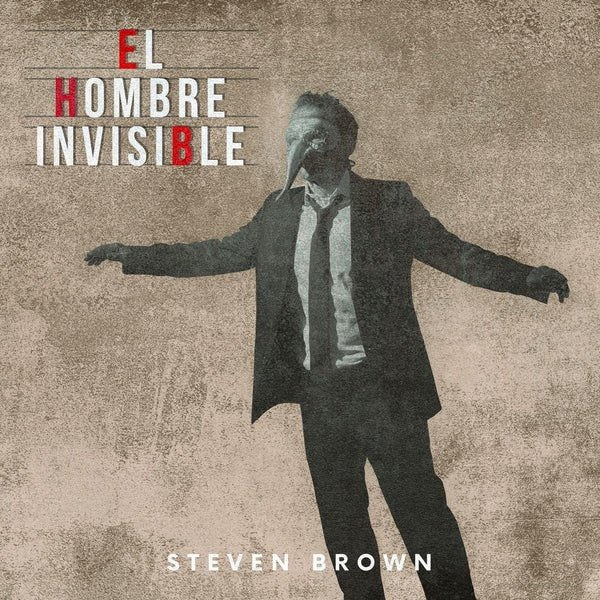
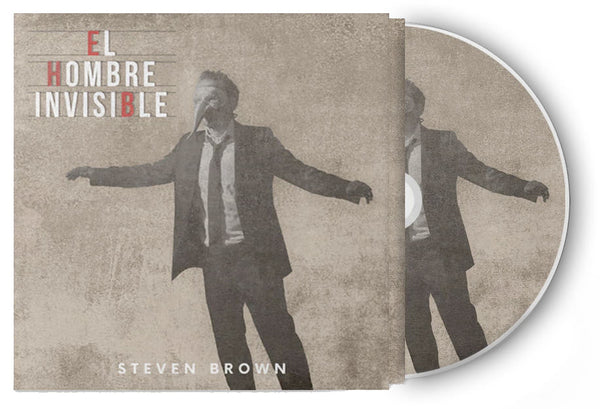
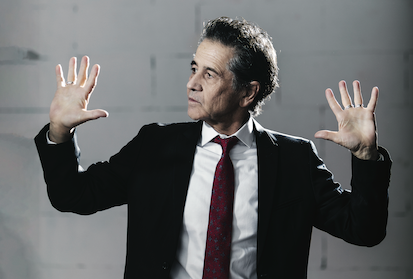
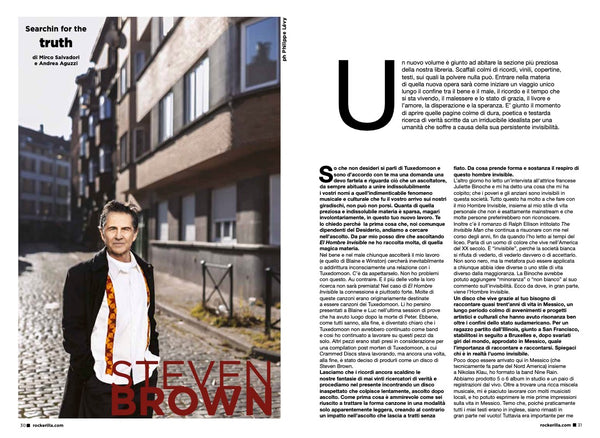
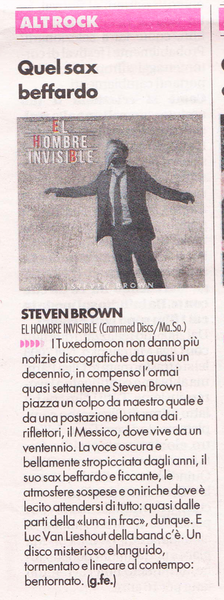
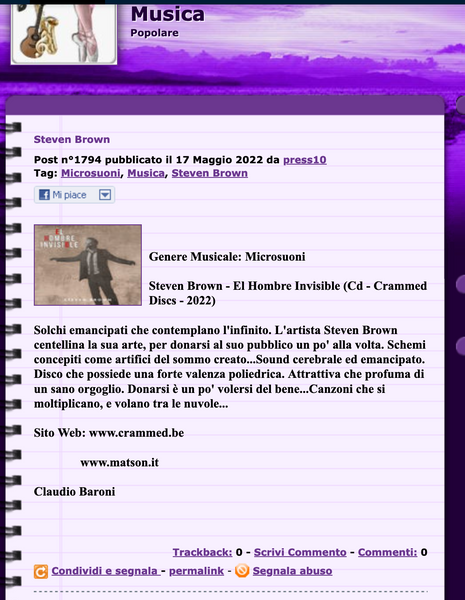
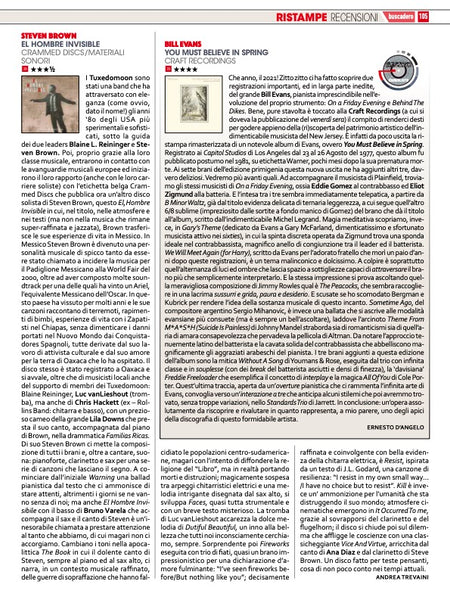
Crammed Discs
STEVEN BROWN - El Hombre Invisible . CD
For his first solo album since the early ‘90s, Tuxedomoon's co-front man delivers a hypnotic collection of songs, a song cycle of sorts, which draws from his life in Mexico, where he’s been residing for many years now.
El Hombre Invisible is centered around Steven's emblematic vocals, melodies & lyrics, set in an intimate environment, with sparse elegant, arrangements for guitar, bass, occasional horns, and of course Mr Brown's trademark piano & saxophone playing.
The atmosphere and lyrics of the songs reflect some of the experiences & impressions gathered in the course of these latest 28 years, which have included earthquakes, a kidnapping, rubbing shoulders with the Zapatistas in Chiapas, being confronted with the still omnipresent traces of the Spanish conquest five centuries ago (and the effects of “The Most Dangerous Book In The World”, which guided the conquistadores’ steps), Steven's years of working as a cultural activist, and his enduring love for the general beauty of the nature and the people in his new hometown of Oaxaca.
El Hombre Invisible was recorded in Oaxaca with local musicians, including Lila Downs, who sings a duet with Steven on the song Familias Ricas. Plus a couple of external guests: Tuxedomoon's Luc van Lieshout on trumpet, and Chris Haskett (ex-Rollins Band) on guitar. The songs were mixed in Berlin by Steven's old friend and musical associate Nikolas Klau.
Born in Illinois, Steven Brown moved to San Francisco where he founded Tuxedomoon with Blaine L.Reininger, then to New York. The band left the USA’s toxic atmosphere in the early 1980s, wandered around Europe, and settled in Brussels for twelve years. Ten years later, Steven fell in love with Mexico while changing planes on the way to Belize, and decided to settle there, in 1993. First in Mexico City, then in Oaxaca, where he built his own house. He’s been regularly returning to Europe to record and perform with Tuxedomoon, while developing various activities in Mexico, where he founded several bands (including Nine Rain and the Ensamble Kafka wind ensemble), worked to support indigenous brass bands, and has been running Cinema Domingo, which started as weekly projections of old films in his house, then developed into a band (Cinema Domingo Orchestra) specialised in writing and publicly performing new soundtracks to old movies. Steven loves Oaxaca, its landscape (he finds it to be not unlike Toscana) and the unavoidable daily encounters with bright and dark sides of Mexico’s history & culture.
Musicians
Steven Brown - vocals, grand piano, clarinet, saxophones; Beto Cruz – synth; Nikolas Klau - keyboards and percussion; Beto Cruz - guitar, bass, mellotron, synth; Julio Garcia – guitar; Bruno Varela – bass; Alejandro Herrera – jarana; Angel Garcia – violin; Jose Luis Hernandez Vasquez – trumpet; Facundo Vargas – trombone; Oxama – percussion; Chris Haskett - guitar and bass; Luc van Lieshout – flugelhorn; Ana Diaz – vocals; Lila Downs - vocal
More about Steven Brown’s career
As part of Tuxedomoon, Steven first recorded two emblematic albums for The Residents’ label Ralph Records, followed by thirteen more albums during the ‘80s and since 2004 (after the end of the band’s hiatus), all out in Crammed Discs.Thanks to their ability to crystallize a certain dark and romantic zeitgeist, and the originality of their music (which incorporated and transcended post-punk, rock, electronics, minimal music, classical, jazz, Gypsy music and more, Tuxedomoon quickly became one of the most influential bands of the decade and toured all around the globe
Meanwhile, Steven Brown developed a career as a solo artist: he released over twenty albums under his name (including his collaborations with Blaine Reininger and with Benjamin Lew). He’s composed music for dance, theatre, film and fashion shows: his and Tuxedomoon’s music appeared in works by Maurice Béjart, Thierry Smits, Wim Wenders, Patrice Chéreau and many more. Steven created and performed music for the Mexican pavilion at the Word Fair 2000, was commissioned to write soundtracks for Sergei Eisenstein's unfinished ¡Que Viva Mexico! (1930) and -at the request of the Goethe Institut- for the American premieres of various restored classic films. He earned an Ariel (the Mexican equivalent of the Oscar) for his soundtrack for El Informe Toledo, a film about the widely respected painter-sculptor-activist Francisco Toledo. And last but not least, as part of a collaborative work by Tuxedomoon and Cult With No Name, he took part in the creation of the the soundtrack for Blue Velvet Revisited (2015), a documentary on the making of David Lynch's classic film, which was selected by Lynch to appear at his own festival in Los Angeles.
2022 © Crammed Discs - cram 310
#reviews: https://www.blogfoolk.com/2022/04/steven-brown-el-hombre-invisible.html
https://www.tomtomrock.it/review/recensione-steven-brown-el-hombre-invisible/

